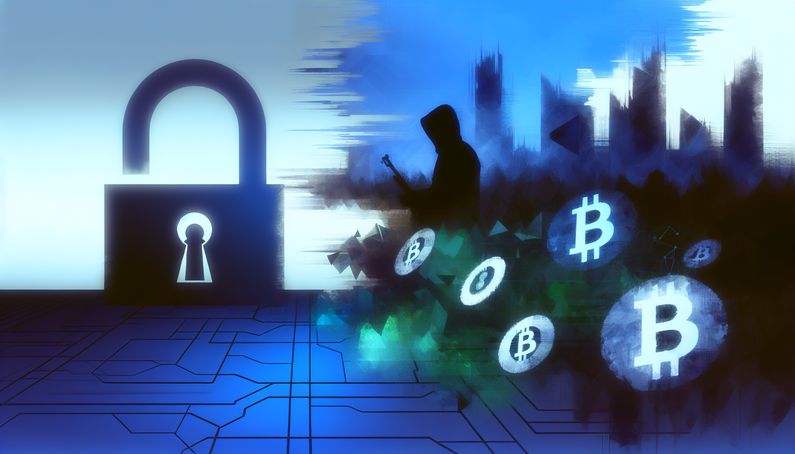
The Economic Impact of Cybersecurity Breaches: Lessons from a Recent Arrest
An arrest has recently highlighted the massive economic toll of cybersecurity breaches. A hacker infiltrated 5,000 hosting accounts to mine cryptocurrency, causing an estimated $4.5 million in damages. This case illustrates the high costs of unauthorized digital access, including increased electricity use and hardware damage (Bleeping Computer). Beyond immediate financial losses, such breaches can harm reputations and lead to legal troubles for affected companies. The hacker’s sophisticated techniques, including using open-source intelligence, show how cyber threats are evolving and why strong security measures are essential.
Economic Impact of Cybersecurity Breaches
The hacker’s arrest for breaching 5,000 hosting accounts to mine cryptocurrency underscores the significant economic impact of cybersecurity threats. The financial damages from this incident alone were estimated at $4.5 million, illustrating the substantial costs that can arise from unauthorized access to digital infrastructure (Bleeping Computer).
Direct Financial Losses
Direct financial losses in cybersecurity breaches often stem from unauthorized activities, such as the illicit mining of cryptocurrency in this case. The hacker’s use of compromised hosting accounts to deploy virtual machines for mining operations resulted in a direct economic burden on the hosting company. These costs include increased electricity consumption, wear and tear on hardware, and potential service disruptions for legitimate users (Bleeping Computer).
Indirect Economic Consequences
Beyond immediate financial losses, breaches can lead to indirect economic consequences. These include reputational damage to the affected company, potential loss of business, and increased insurance premiums. Companies may also face legal liabilities if clients seek compensation for damages incurred due to the breach. The hosting company involved in this incident may experience such repercussions, affecting its long-term financial health.
Costs of Mitigation and Recovery
Mitigating the effects of a cybersecurity breach involves significant expenditures. Companies must invest in forensic investigations, system audits, and security enhancements to prevent future incidents. The hosting company targeted by the hacker will likely incur costs related to these activities as it seeks to secure its infrastructure and restore client trust. Additionally, legal fees and potential regulatory fines may further strain financial resources.
Cybersecurity Threats and Their Evolution
The arrest of the hacker underscores the evolving nature of cybersecurity threats. As technology advances, so do the methods employed by cybercriminals to exploit vulnerabilities. Understanding these threats is crucial for developing effective defense strategies.
Advanced Persistent Threats (APTs)
Advanced Persistent Threats (APTs) represent a significant challenge in the cybersecurity landscape. These threats involve prolonged and targeted cyberattacks aimed at compromising specific entities. The hacker’s ability to evade detection since 2018 suggests the use of sophisticated techniques characteristic of APTs. Such threats require continuous monitoring and adaptive security measures to mitigate their impact.
Exploitation of Open-Source Intelligence
The hacker’s use of open-source intelligence (OSINT) to identify and breach vulnerable infrastructure highlights a growing trend among cybercriminals. OSINT involves gathering publicly available information to identify potential targets and weaknesses. Organizations must be vigilant in managing their digital footprint and implementing robust security protocols to counteract this threat.
Remote Access and Data Theft Tools
The seizure of tools used for remote access and data theft during the hacker’s arrest indicates the prevalence of such methods in cybercrime. These tools enable attackers to gain unauthorized access to systems and exfiltrate sensitive data. Organizations must employ multi-layered security measures, including encryption and access controls, to protect against these threats.
Legal and Regulatory Implications
The legal and regulatory landscape plays a critical role in addressing cybersecurity threats. The charges faced by the hacker under Part 5 of Article 361 of the Criminal Code of Ukraine reflect the seriousness with which such offenses are treated. However, the evolving nature of cybercrime necessitates continuous updates to legal frameworks to ensure they remain effective.
International Cooperation in Cybercrime Prosecution
Cybercrime often transcends national borders, requiring international cooperation for effective prosecution. The hacker’s activities, which targeted an international hosting company, underscore the need for cross-border collaboration among law enforcement agencies. Strengthening international legal frameworks and fostering cooperation can enhance the ability to apprehend and prosecute cybercriminals.
Compliance with Data Protection Regulations
Organizations must comply with data protection regulations to mitigate legal risks associated with cybersecurity breaches. Regulations such as the General Data Protection Regulation (GDPR) in the European Union impose strict requirements on data handling and breach notification. Non-compliance can result in substantial fines, adding to the financial burden of a breach.
Strategies for Enhancing Cybersecurity
The incident involving the hacker highlights the importance of proactive cybersecurity measures. Organizations must adopt comprehensive strategies to safeguard their digital assets and mitigate the risk of breaches.
Implementation of Multi-Factor Authentication
Multi-factor authentication (MFA) is a critical component of a robust cybersecurity strategy. By requiring multiple forms of verification, MFA adds an additional layer of security to user accounts. The hosting company targeted in this breach could benefit from implementing MFA to prevent unauthorized access to client accounts.
Regular Security Audits and Vulnerability Assessments
Conducting regular security audits and vulnerability assessments is essential for identifying and addressing potential weaknesses in an organization’s infrastructure. These assessments provide valuable insights into the effectiveness of existing security measures and help prioritize areas for improvement.
Employee Training and Awareness Programs
Human error remains a significant factor in cybersecurity breaches. Organizations should invest in employee training and awareness programs to educate staff about best practices for cybersecurity. Training should cover topics such as recognizing phishing attempts, using strong passwords, and reporting suspicious activities.
Future Trends in Cybersecurity
As cyber threats continue to evolve, staying informed about future trends is crucial for maintaining robust security postures. The following trends are expected to shape the cybersecurity landscape in the coming years.
Increased Use of Artificial Intelligence in Cyber Defense
Artificial intelligence (AI) is playing an increasingly important role in cybersecurity. AI-powered tools can analyze vast amounts of data to detect anomalies and identify potential threats in real-time. Organizations should explore the integration of AI into their security operations to enhance threat detection and response capabilities.
Growing Importance of Zero Trust Architecture
Zero Trust Architecture (ZTA) is gaining traction as a security model that assumes no implicit trust within a network. ZTA requires continuous verification of user identities and device integrity before granting access to resources. Implementing ZTA can help organizations reduce the risk of unauthorized access and lateral movement within their networks.
Emphasis on Supply Chain Security
Supply chain attacks have emerged as a significant threat vector, with cybercriminals targeting third-party vendors to gain access to larger networks. Organizations must prioritize supply chain security by vetting vendors, implementing strict access controls, and monitoring for potential threats.
In conclusion, the arrest of the hacker responsible for breaching 5,000 hosting accounts to mine cryptocurrency highlights the multifaceted nature of cybersecurity threats and their economic impact. By understanding these threats and implementing proactive measures, organizations can better protect their digital assets and mitigate the risk of future breaches.
Final Thoughts
The arrest of the hacker responsible for breaching 5,000 hosting accounts serves as a stark reminder of the multifaceted nature of cybersecurity threats. The economic impact, estimated at $4.5 million, illustrates the substantial costs of unauthorized digital access. This case highlights the importance of international cooperation in cybercrime prosecution and the need for organizations to comply with data protection regulations to mitigate legal risks. As cyber threats continue to evolve, integrating advanced technologies like AI and adopting security models such as Zero Trust Architecture will be crucial for enhancing cybersecurity defenses (Bleeping Computer).
References
- Hacker arrested for breaching 5,000 hosting accounts to mine crypto, 2024, Bleeping Computer https://www.bleepingcomputer.com/news/security/hacker-arrested-for-breaching-5-000-hosting-accounts-to-mine-crypto/



